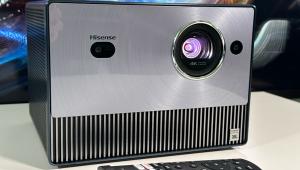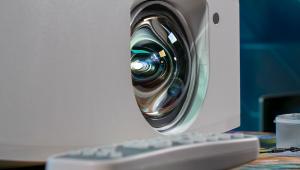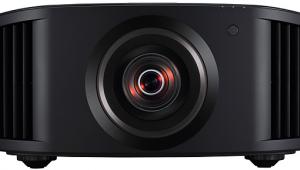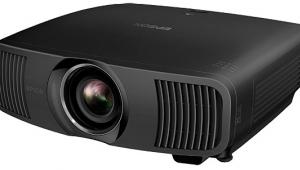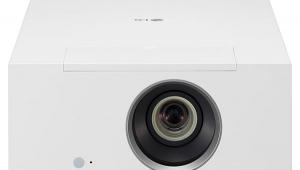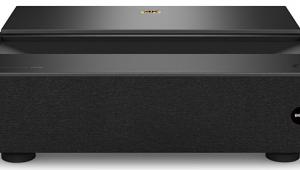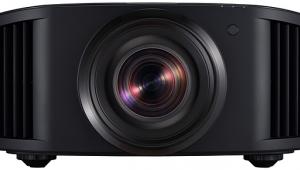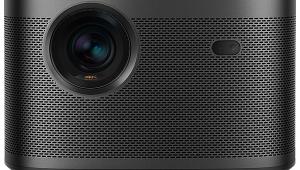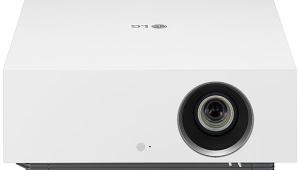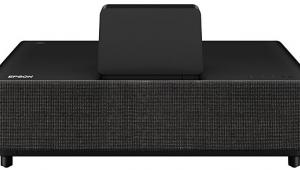BenQ PE8720 720p DLP Projector Page 2
Staying in the swords and sandals genre, the mini-series Empire, which covers the same era as Rome, is historically ridiculous (at least Rome made an effort to get it right). But it's nearly as good a DVD transfer. Apart from medium and long shots, which sometimes looked a little soft (a problem on most 720p displays with all but the very best standard def DVDs), it looked terrific on the PE8720, with vivid color, good blacks, and a believable sense of depth. I saw no major weaknesses.
 Shakespeare in Love remains a reference quality DVD years after its release. Apart from a very few badly shot or transferred scenes (particularly the VHS look in the audience shots in the command performance in the palace at Whitehall early in the film) I still find it as good as any DVD for judging the quality of a display. True, HD can show more, particularly to the experienced videophile, but the average viewer, looking at this disc on the BenQ, could be forgiven if he or she thought the picture was high-definition.
Shakespeare in Love remains a reference quality DVD years after its release. Apart from a very few badly shot or transferred scenes (particularly the VHS look in the audience shots in the command performance in the palace at Whitehall early in the film) I still find it as good as any DVD for judging the quality of a display. True, HD can show more, particularly to the experienced videophile, but the average viewer, looking at this disc on the BenQ, could be forgiven if he or she thought the picture was high-definition.
The best subjective resolution of detail on Shakespeare seemed to fall between settings on the Sharpness control, so I settled on just a hair too sharp, which on my sample was a setting of -1 with Filter set to 1. And there is a boatload of information on this DVD, distinguished from HD mainly by the softness of its smallest details, like the jewels in the queen's gowns. Again, the BenQ, for the most part, got the blacks and shadow detail nearly right, though this film is rarely challenging in that respect. The image was strikingly three-dimensional on the scenes that allowed it to be. Colors were lifelike and often gorgeous. Most important, flesh tones were good. They are a little reddish on this DVD with most displays, but the BenQ's tint control was useful in taming the sunburned look and producing a more natural hue.
Master and Commander; The Far Side of the World has more muted colors than Shakespeare in Love. It also has a number of far more difficult dark scenes. The BenQ did a respectable job on the worst of these, the hellishly dim first five minutes of the picture that trip up most digital displays. It wasn't perfect; a few projectors I've seen produce slightly richer, deeper, less foggy blacks here. But you'd have to go to a projector with a good auto iris, or better yet, a CRT, to make it look significantly better than it does on the PE8720.
The latest DVD box sets of Lost and Battlestar Galactica, both of which also have a fair share of dark scenes, looked generally excellent on the BenQ, so much so that I actually got into the plots and sat through whole episodes (and not for the first time). I did note a few noisy, dark scenes, mostly on BSG, but other similar scenes were fine, suggesting that the flaw was in the program material and not in the projector.
Colors never looked wrong on the BenQ. Brightly lit green foliage may be a little overdone, as it is on so many digital displays, but it was well within an acceptable range here. Although you can turn down the green intensity with the projector's individual color controls if you like, I preferred not to mess with them.
High-Definition
While Charlie and the Chocolate Factory on HD DVD doesn't look quite as detailed on the BenQ as it does on Optoma's HD81 1080p projector, it is still clearly high-definition and noticeably better looking than standard DVDs. Some darker scenes in this film do look a little drab, with a hint of gray haze, on the PE8720. But it wasn't distracting, and as the image got brighter it improved dramatically. While flesh tones could look a little tanned here (though still believable), other colors were rich and often eye-popping.
The BenQ was equally effective on other high-definition material. Polar Express was vivid and generally sharp. Despite soft facial textures on the creepy-looking animated humans (probably done that way by design), the other details in the film were often stunning. Seabiscuit wasn't uniformly sharp, but the standard DVD isn't either. The HD DVD definitely looks better than the DVD, and certainly looked better on the BenQ than the standard DVD has looked on any projector that has passed through my home theater.
The BenQ was just a bit softer and less detailed than the 1080p Optoma HD81. Moving an extra step up on the BenQ's Sharpness control, though not an ideal solution, helped noticeably without introducing visible edge enhancement or ringing (though these artifacts could sometimes be seen with test patterns at the same settings). But it could not duplicate the resolution of the 1080p projector. The detail differences were evident primarily in medium and long shots; the smaller the details, the softer they look on any projector, and the lower the projector's resolution, the more apparent the loss.
The BenQ also looks a little darker than the Optoma. The PE8720's peak whites are more than adequate, but its gamma appears to be a little high. That is, it's darker and less punchy in the low- and mid-brightness region (see "Tests and Calibration"). On the HD DVD of Red Dragon the blacks looked a little crushed on the BenQ and better resolved on the Optoma.
Nevertheless, you won't feel deprived with the PE8720. When you are watching good high-definition there's never any doubt about it.
Conclusions
At $7,000, the BenQ looked like a fine value six months ago. Since that time, a number of 1080p projectors have been launched that either undercut or equal that price.
But as I noted at the top of this report, the PE8720 streets at far less than its MSRP, and at those real world prices it's a very attractive buy.
I found no major weaknesses in the BenQ. Its blacks aren't spectacular, but they're good. The projector offers a range of usable adjustments while avoiding those that might produce more user confusion than benefit. The colors are excellent and can be calibrated relatively quickly given the right tools. You can adjust the inputs separately. The projector isn't free of rainbow artifacts, but its resistance to them is about average to my rainbow-sensitive eyes. Program material permitting, the image is sharp and detailed. And the deinterlacing and scaling are good, though a bit better on film-based material than on video-originated sources.
But perhaps the most important observation I can offer on the BenQ PE8720 is this: While watching it, I often forgot about the projector, forgot about analyzing the image, and simply got involved in the program. That's the bottom line for any video display.
Highs and Lows
Highs
Bright, sharp image with realistic detail
Motorized zoom, focus, and lens shift
Good performance on both standard and high-definition
Lows
720p in an increasingly 1080p market
Will not accept 480i at its HDMI input
Will not do below black on HDMI


